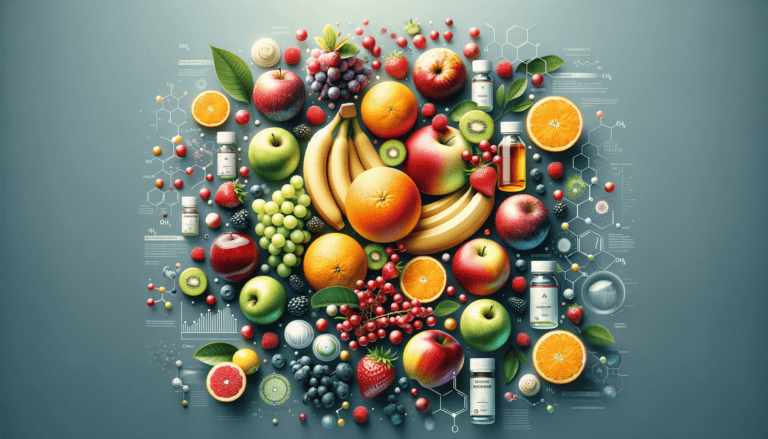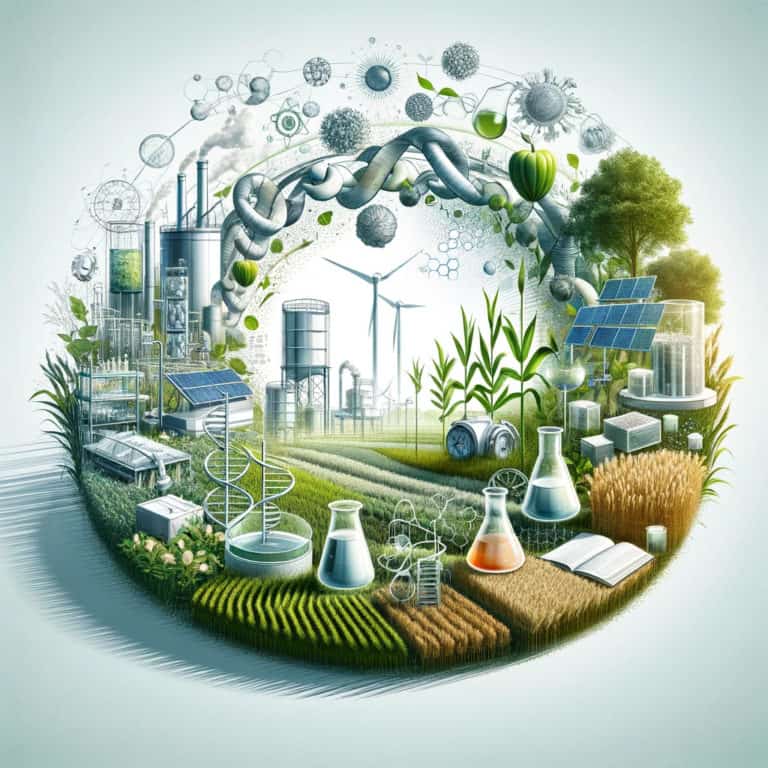Biofilms Revolute Chemical and Energy Production
This paper investigates biofilms’ critical role in increasing chemical and energy production efficiency, outlining advances in biofilm reactors, resolving obstacles, and providing insights into future research prospects for industrial scalability.

Introduction to Biofilms
Biofilms are organized colonies of microorganisms enclosed in an extracellular polymeric matrix (EPS) (Gross et al., 2012). They serve an important role in a variety of biotechnological applications, including as increasing the efficiency of chemical and energy production processes. Biofilms provide benefits such as continuous processes with minimal reactor downtime, catalyst retention, and low biomass in the product stream (Li et al., 2013). However, biofilms’ dynamic and heterogeneous nature makes it difficult to manage biofilm-mediated bioprocesses, restricting their industrial use (Hu et al., 2019).
Biofilms have the potential to be used in commercial bioconversion processes because of their capacity to increase response rates (Qureshi et al., 2005). They are known to be strong biocatalysts, making them useful for fine chemical synthesis and the generation of high-value chemicals (Gross et al., 2009; Carvalho et al., 2022). Biofilms can also create important products more efficiently than suspended cultivations, which increases yield and productivity (Schmeckebier et al., 2022).
In biotechnology, biofilms allow pathogenic bacteria to live in difficult conditions, emphasizing their importance in bacterial persistence and resistance (Kannappan et al., 2023). Furthermore, biofilms have been investigated for their effect on the conversion of cellulose and lignocellulose, demonstrating its promise in consolidated bioprocessing applications.
Biofilm creation is a complex process that requires cell-to-cell contact via chemical signaling molecules, which is critical for their development and structural integrity (Sangeetha et al., 2020). Biofilms are recognized to shield bacteria from chemical disinfection, highlighting their function in bacterial survival and persistence in a variety of situations (González-Gómez et al., 2021).
Furthermore, biofilms are known for their viscoelastic extracellular polymeric substance (EPS) matrix, which provides mechanical protection to biofilm occupants from external threats (Hou et al., 2018). Biofilms are a serious concern in the dairy sector because they cause contamination and deterioration, prompting the development of antibiofilm techniques to assure food safety (Pant et al., 2023; Shemesh & Ostrov, 2020).
Biofilms represent a viable path for improving biotechnological processes, but their dynamic nature and resistance mechanisms pose obstacles that must be addressed before they can be used effectively in industry. Understanding the complicated mechanisms underpinning biofilm growth and activity allows researchers to optimize chemical and energy production processes in biotechnology.
Biofilm-based Production Systems
Biofilm reactors have gained significant attention in various industrial processes, particularly in the production of chemicals and energy. These reactors have distinct advantages over suspended cell reactors, including increased biomass density, operational stability, and the potential for long-term operation (Carvalho et al., 2022). Various biofilm reactors have been designed and used for a variety of applications, demonstrating technological and design improvements.
One notable biofilm reactor is the membrane-biofilm reactor (MBfR), also known as the membrane-aerated biofilm reactor (MABR), which uses gas-transferring membranes to treat biofilms (Nerenberg, 2016). This method has shown potential in applications such as hydrogen production, wastewater treatment, and methane production (Nerenberg, 2016). Furthermore, biological fixed-film systems, such as rotating biological contactors, fluidized-bed biofilm reactors, and packed-bed biofilm reactors, have been widely researched for their effectiveness in a variety of biotechnological processes (Kim et al., 2020).
Biofilm reactors have been investigated for industrial bioconversion processes in order to increase reaction speeds and productivity (Qureshi et al., 2005). The reactor layouts can vary from simple batch reactors to more complicated setups such as continuous stirred tank reactors (CSTR), packed bed reactors (PBR), and fluidized bed reactors (FBR) (Qureshi et al., 2005). Studies have also been conducted on the creation and growth of heterotrophic aerobic biofilms in airlift reactors, emphasizing the dynamics of biofilm formation and biomass generation (Tijhuis et al. 1994).
Innovative reactor designs such as the drip flow biofilm reactor have been developed to grow biofilms under low shear conditions close to the air-liquid interface, offering a controlled environment for biofilm growth (Goeres et al., 2009). Furthermore, advances in segmented flow monolithic reactors have been used to large-scale production processes, revealing the possibility of efficient catalytic biofilm growth (Karande et al., 2014).
Algal biofilm reactors have been investigated for integrated wastewater treatment and biofuel production, showcasing their potential in terms of biomass productivity, nutrient removal, and biofuel generation (Hoh et al., 2016). Furthermore, biofilm reactors have been used to increase the synthesis of important chemicals such as lipopeptides, highlighting its relevance in biorefinery applications (Tang et al., 2023).
Biofilm reactors represent a versatile and efficient technology for various industrial processes, offering advantages such as high productivity, operational stability, and enhanced reaction rates. Continued research and development in biofilm reactor design and operation are required to improve performance and broaden their applications in chemical and energy production processes.
Challenges and Future Perspectives
Scaling and optimizing biofilm-based production systems for industrial applications presents various problems that must be overcome in order to increase efficiency and productivity. One of the most significant difficulties is the development of bioprocesses that can maximize bioconversion rates while lowering costs and environmental liabilities (Bianchini et al., 2020). Achieving this balance necessitates novel techniques to scaling up biofilm processes while remaining cost-effective and sustainable.
Another problem is scaling biofilm reactors for high cell density cultivation, as low cell density due to light constraints and oxygen accumulation might impair performance in conventional photobioreactors (Kenkel et al., 2023). To overcome these restrictions, novel reactor designs and operational procedures must be developed in order to ensure optimal biofilm development conditions.
Furthermore, our understanding of biofilm physicochemical features and characterisation is inadequate, making it difficult to optimize nitrogen removal capability in biofilm reactors (Fan & Zhou, 2023). Addressing this dilemma requires extensive research to uncover the fundamental principles that drive biofilm behavior and performance in wastewater treatment procedures.
Practical limitations in moving bed biofilm reactors include biofilm separation from support media and slow biofilm formation rates during the startup stage (KOZAK et al., 2022). Strategies for improving biofilm attachment and durability, as well as accelerating biofilm production, are critical for the successful use of these reactors in wastewater treatment applications.
Furthermore, optimizing biofilm reactors for specific purposes, such as producing added-value chemicals, necessitates a thorough understanding of biofilm growth dynamics and metabolic processes (Carvalho et al., 2022). Future research should focus on creating customized biofilm systems that may efficiently manufacture desired chemicals while increasing productivity and yield.
Furthermore, optimizing biofilm reactors for diverse processes, such as CO2 conversion to methanol, necessitates sophisticated modeling and control methodologies to optimize reactor performance and efficiency (Zahedi et al., 2007; Elkamel et al., 2009). Implementing optimal reactor layouts and control methods can improve overall process efficiency and yield.
Overall, solving the challenges of scaling and optimizing biofilm-based production systems for commercial applications necessitates interdisciplinary research activities that span biology, chemistry, engineering, and environmental science. Researchers can address these challenges by inventing revolutionary technologies, modeling methodologies, and operational tactics that will allow biofilm reactors to reach their full potential in a variety of biotechnology processes.
References:
Bianchini, L., Ramos, R., Ns, d., de, P., Rt, R., Glassey, J., … & Rosa, E. (2020). Drug biotransformation process favored by fungal biofilms formed on a proposed fixed bed‐airlift hybrid reactor. Journal of Chemical Technology & Biotechnology, 96(4), 999-1006. https://doi.org/10.1002/jctb.6610
Brethauer, S., Shahab, R., & Studer, M. (2020). Impacts of biofilms on the conversion of cellulose. Applied Microbiology and Biotechnology, 104(12), 5201-5212. https://doi.org/10.1007/s00253-020-10595-y
Carvalho, F., Azevedo, A., Ferreira, M., Mergulhão, F., & Gomes, L. (2022). Advances on bacterial and fungal biofilms for the production of added-value compounds. Biology, 11(8), 1126. https://doi.org/10.3390/biology11081126
Carvalho, F., Azevedo, A., Ferreira, M., Mergulhão, F., & Gomes, L. (2022). Advances on bacterial and fungal biofilms for the production of added-value compounds. Biology, 11(8), 1126. https://doi.org/10.3390/biology11081126
Carvalho, F., Azevedo, A., Ferreira, M., Mergulhão, F., & Gomes, L. (2022). Advances on bacterial and fungal biofilms for the production of added-value compounds. Biology, 11(8), 1126. https://doi.org/10.3390/biology11081126
Elkamel, A., Zahedi, G., Marton, C., & Lohi, A. (2009). Optimal fixed bed reactor network configuration for the efficient recycling of co2 into methanol. Energies, 2(2), 180-189. https://doi.org/10.3390/en20200180
Fan, Z. and Zhou, X. (2023). Decoding the role of extracellular polymeric substances in enhancing nitrogen removal from high-ammonia and low-c/n wastewater in a sequencing batch packed-bed biofilm reactor. Polymers, 15(6), 1510. https://doi.org/10.3390/polym15061510
Goeres, D., Hamilton, M., Beck, N., Buckingham‐Meyer, K., Hilyard, J., Loetterle, L., … & Stewart, P. (2009). A method for growing a biofilm under low shear at the air–liquid interface using the drip flow biofilm reactor. Nature Protocols, 4(5), 783-788. https://doi.org/10.1038/nprot.2009.59
González-Gómez, J., González-Torres, B., Guerrero-Medina, P., López-Cuevas, O., Chaidez, C., Avila-Novoa, M., … & Gutiérrez-Lomelí, M. (2021). Efficacy of novel bacteriophages against escherichia coli biofilms on stainless steel. Antibiotics, 10(10), 1150. https://doi.org/10.3390/antibiotics10101150
Gross, R., Buehler, K., & Schmid, A. (2012). Engineered catalytic biofilms for continuous large scale production of n‐octanol and (s)‐styrene oxide. Biotechnology and Bioengineering, 110(2), 424-436. https://doi.org/10.1002/bit.24629
Gross, R., Lang, K., Bühler, K., & Schmid, A. (2009). Characterization of a biofilm membrane reactor and its prospects for fine chemical synthesis. Biotechnology and Bioengineering, 105(4), 705-717. https://doi.org/10.1002/bit.22584
Hoh, D., Watson, S., & Kan, E. (2016). Algal biofilm reactors for integrated wastewater treatment and biofuel production: a review. Chemical Engineering Journal, 287, 466-473. https://doi.org/10.1016/j.cej.2015.11.062
Hou, J., Veeregowda, D., Belt-Gritter, B., Busscher, H., & Mei, H. (2018). Extracellular polymeric matrix production and relaxation under fluid shear and mechanical pressure in staphylococcus aureus biofilms. Applied and Environmental Microbiology, 84(1). https://doi.org/10.1128/aem.01516-17
Hu, Y., Liu, X., Ren, A., Gu, J., & Cao, B. (2019). Optogenetic modulation of a catalytic biofilm for the biotransformation of indole into tryptophan. Chemsuschem, 12(23), 5142-5148. https://doi.org/10.1002/cssc.201902413
KOZAK, M., Göçer, S., Duyar, A., İrem, A., Köroğlu, E., & Cirik, K. (2022). Investigation of biofilm formation on kaldnes k1. Kahramanmaraş Sütçü İmam Üniversitesi Mühendislik Bilimleri Dergisi, 25(4), 565-569. https://doi.org/10.17780/ksujes.1137084
Kannappan, A., Prasath, K., Sathya, S., Packiavathy, I., Krishnan, S., Venkateswar, A., … & MubarakAli, D. (2023). Exploring possible ways to enhance the potential and use of natural products through nanotechnology in the battle against biofilms of foodborne bacterial pathogens. Pathogens, 12(2), 270. https://doi.org/10.3390/pathogens12020270
Karande, R., Halan, B., Schmid, A., & Buehler, K. (2014). Segmented flow is controlling growth of catalytic biofilms in continuous multiphase microreactors. Biotechnology and Bioengineering, 111(9), 1831-1840. https://doi.org/10.1002/bit.25256
Kenkel, A., Karande, R., & Bühler, K. (2023). Evaluating scaling of capillary photo‐biofilm reactors for high cell density cultivation of mixed trophies artificial microbial consortia. Engineering in Life Sciences, 23(9). https://doi.org/10.1002/elsc.202300014
Kim, E., Jae-Hoon, H., & Choi, J. (2020). Biological fixed‐film systems. Water Environment Research, 93(4), 491-501. https://doi.org/10.1002/wer.1445
Li, X., Hauer, B., & Rosche, B. (2013). Catalytic biofilms on structured packing for the production of glycolic acid. Journal of Microbiology and Biotechnology, 23(2), 195-204. https://doi.org/10.4014/jmb.1207.07057
Nerenberg, R. (2016). The membrane-biofilm reactor (mbfr) as a counter-diffusional biofilm process. Current Opinion in Biotechnology, 38, 131-136. https://doi.org/10.1016/j.copbio.2016.01.015
Pant, K., Cotter, P., Wilkinson, M., & Sheehan, J. (2023). Towards sustainable cleaning‐in‐place (cip) in dairy processing: exploring enzyme‐based approaches to cleaning in the cheese industry. Comprehensive Reviews in Food Science and Food Safety, 22(5), 3602-3619. https://doi.org/10.1111/1541-4337.13206
Qureshi, N., Annous, B., Ezeji, T., Karcher, P., & Maddox, I. (2005). Biofilm reactors for industrial bioconversion processes: employing potential of enhanced reaction rates. Microbial Cell Factories, 4(1). https://doi.org/10.1186/1475-2859-4-24
Qureshi, N., Annous, B., Ezeji, T., Karcher, P., & Maddox, I. (2005). Biofilm reactors for industrial bioconversion processes: employing potential of enhanced reaction rates. Microbial Cell Factories, 4(1). https://doi.org/10.1186/1475-2859-4-24
Sangeetha, S., Padmalochani, B., Kshirsagar, J., Kothimbakkam, S., & C, B. (2020). Quorum sensing — polymicrobial challenge in periodontics. Ip International Journal of Periodontology and Implantology, 4(4), 115-119. https://doi.org/10.18231/j.ijpi.2019.025
Schmeckebier, A., Zayed, A., & Ulber, R. (2022). Productive biofilms: from prokaryotic to eukaryotic systems. Journal of Chemical Technology & Biotechnology, 97(11), 3049-3064. https://doi.org/10.1002/jctb.7208
Shemesh, M. and Ostrov, I. (2020). Role of bacillus species in biofilm persistence and emerging antibiofilm strategies in the dairy industry. Journal of the Science of Food and Agriculture, 100(6), 2327-2336. https://doi.org/10.1002/jsfa.10285
Tang, Z., Zhang, H., Li, Y., & Luo, W. (2023). Enhanced iturin a production in a two-compartment biofilm reactor by bacillus velezensis nd. Frontiers in Bioengineering and Biotechnology, 11. https://doi.org/10.3389/fbioe.2023.1102786
Tijhuis, L., Loosdrecht, M., & Heijnen, J. (1994). Formation and growth of heterotrophic aerobic biofilms on small suspended particles in airlift reactors. Biotechnology and Bioengineering, 44(5), 595-608. https://doi.org/10.1002/bit.260440506
Zahedi, G., Elkamel, A., & Lohi, A. (2007). Dynamic optimization strategies of a heterogeneous reactor for co2conversion to methanol. Energy & Fuels, 21(5), 2977-2983. https://doi.org/10.1021/ef700361m



